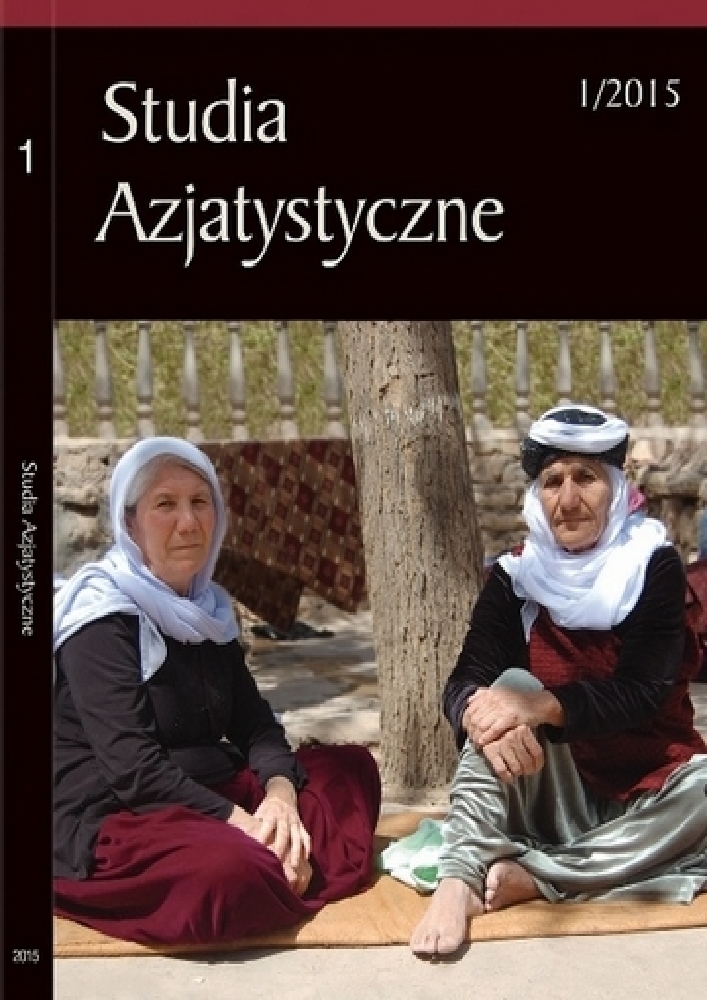Abstrakt
Decorative motives known from the Chinese blue-and-white porcelain began to appear massively on Persian ceramics between the 14th and 17th century. Interestingly, the initial role of adaptations being a substitute for an expensive original became something more – a source of inspiration for making new vessels decorated not only in cobalt blue but also in colorful slips. The article is dedicated to an analysis of Persian adaptations of Chinese kraak porcelain made during the Safavid period (1501-1732). Due to the fact that the process of adaptation was very complex and there is no 1:1 copy of a kraak dish in Iran, author in her research has to focus on comparing individual motifs instead of the whole vessels. She introduces new categorization of the adapted designs and divides them into 4 groups depending on how close they resemble the Chinese origi nals: in group 1 called literal adaptations the motifs are most similar to the originals; in group 2 named edited adaptations are those that have an element added or taken away; in group 3, altered adaptations, the designs undergo changes in style but still bear the basic characteristics of the originals; in group 4, free adaptations, are those that only resemble the Chinese ones.Bibliografia
Allen, Robert. 1992. The Penguin English Dictionary. London: Penguin Group.
Eliott, Kamilla. 2003. Rethinking the Novel/Film Debate. Cambridge: Cambridge University Press.
Eliott, Kamilla. 2012. The Adaptation of Adaptation: A Dialogue between the Sciences and Humanities: Pascal Nicklas, Oliver Lindner (red.). Adaptation and Cultural Appropriation: Literature,Film, and the Arts. Berlin: Walter De Gruyter, 145-161.
Golombek, Lisa, Robert B. Mason, Patricia Proctor. 2001. Safavid Potters' Marks and the Question of Provenance, Iran 39, 207-239.
Golombek, Lisa, Robert B. Mason, Patricia Proctor, Eileen Reilly. 2014. Persian Pottery in the First Global Age. The Sixteenth and Seventeenth Centuries. Leiden: Brill.
Hartland, Richard. 1999. Literary Theory from Plato to Barthes. An Introductory History. Hong Kong: MacMillian Press.
Hutcheon, Linda. 2006. A Theory of Adaptation. New York: Routledge.
Jacoby, Marcin. 2009. Powtórzenie i falsyfikat w malarstwie chińskim. Warszawa: Trio.
Kubler, George. 1970. The Shape of Time: Remarks on the History of Things. New Haven: Yale University Press.
Rinaldi, Maura. 1989. Kraak Porcelain: A Moment in the History of Trade. London: Bamboo Publishing.
Stam, Robert. 2000. Beyond Fidelity: the Dialogics of Adaptation: James Naremore (red.). Film Adaptation. New Brunswick: Rutgers University Press, 54-76.
Stam, Robert. 2005. Introduction: The Theory and Practice of Adaptation:Robert Stam, Alessandra Raengo (red.). Literature and Film: A Guide to the Theory and Practice of Film Adaptation. Chichester: Blackwell Publishing, 1-52.
Volker, T. 1971. Porcelain and the Dutch East India Company: As Recorded in the Dagh-Registers of Batavia Castle, Those of Hirado and Deshima and Other Contemporary Papers 1602-1682. Leiden: Brill.
Źródła internetowe
Doroszewski, Witold (red.). Słownik języka polskiego.Warszawa:PWN. Reprint online, http://sjpd.pwn.pl/haslo/transformacja/,dostęp: 23.10.2014.
Drabik, Lidia. Słownik języka polskiego. Warszawa: PWN. Reprint online,http://sjp.pwn.pl/szukaj/t%C5%82umaczenie.html, dostęp:23.10.2014.
Drabik, Lidia. Słownik języka polskiego. Warszawa: PWN. Reprint online, http://sjp.pwn.pl/szukaj/adaptacja.html, dostęp: 27.10.2014.
The Metropolitan Museum of Art. The Collection Online,http://www.metmuseum.org/collection/the-collectiononline/search/449547?=&imgNo=0&tabName=gallery-label,dostęp: 4.07.2014.
The Metropolitan Museum of Art. The Collection Online,http://www.metmuseum.org/collection/the-collectiononline/search/451907?=&imgNo=0& tabName=gallery-label,dostęp: 4.07.2014.
Licencja

Ten utwór jest dostępny na licencji Creative Commons Uznanie autorstwa 4.0 Międzynarodowe.
